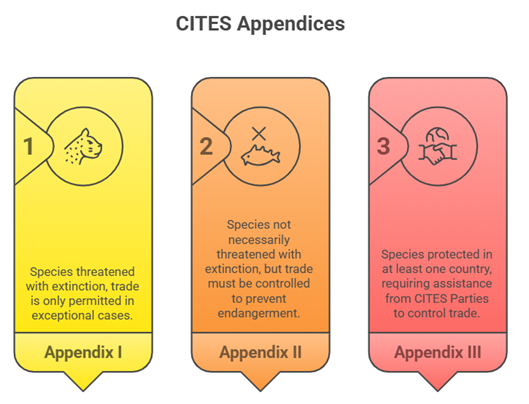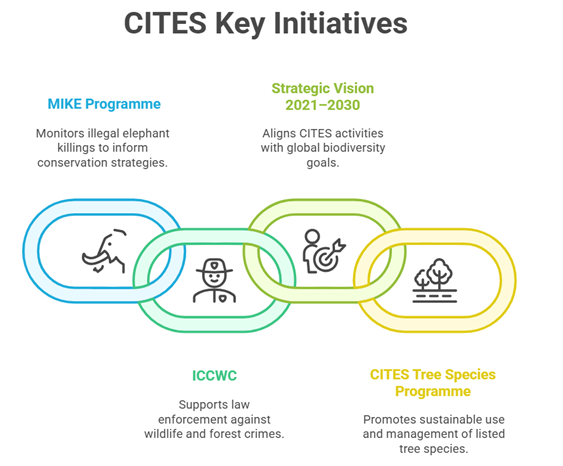04-Jul-2025
50 years of CITES
Miscellaneous
Why in News?
2025 marks the completion of 50 years since the Convention on International Trade in Endangered Species of Wild Fauna and Flora (CITES) came into effect on 1st July 1975.
About CITES
- Origin: CITES (Convention on International Trade in Endangered Species of Wild Fauna and Flora) was first proposed in 1963 during a meeting of the International Union for Conservation of Nature (IUCN).
- Purpose: It is a voluntary agreement between governments to ensure that international trade in wild animal and plant species does not endanger their survival.
- Functioning: CITES works through a permit-based system that controls the import, export, and re-export of species listed under the agreement, including their parts and derivatives.
- CITES Appendices: List species in 3 Appendices based on their degree of protection.
- Management: The CITES Secretariat is managed by the United Nations Environment Programme (UNEP) and is based in Geneva, Switzerland.
- Global Reach: As of 2024, 185 Parties (countries and regional bodies) have joined CITES. India became a Party in 1976.
- Legal Nature: CITES is legally binding but does not override national laws.
Each member country must enforce CITES through its own domestic legislation.
International Union for Conservation of Nature (IUCN)
|
Preparing Through MCQ
Q. Which organization manages the CITES Secretariat?
(1) World Wildlife Fund (WWF)
(2) International Union for Conservation of Nature (IUCN)
(3) United Nations Environment Programme (UNEP)
(4) United Nations Development Programme (UNDP)
Answer: (3) United Nations Environment Programme (UNEP)



